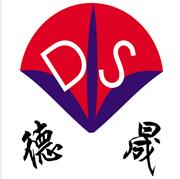- Enzyme(14)
- Carbomer(2)
- Blood collection tube additives(12)
- trinder's reagent(9)
- Biological buffer(21)
- Chemiluminescence reagent(9)
| Hubei xindesheng Material Technology Co., Ltd | |
|---|---|
| Country: | China |
| Tel: | +8618971041571 |
| E-mail: | zjing9632@gmail.com |
| QQ: | 2198447049 |
| Skype: | Chat Now! |
Desheng leads you a deep understanding of chemiluminescence reagents
Release time: 2022-10-09
Desheng leads you a deep understanding of chemiluminescence reagents
In the 1970s, some scholars researched on the basic principle of radioimmunoassay, using the combination of enzyme luminescence and immune reaction to create a chemiluminescence immunoassay, which has high sensitivity, long validity period of the label, and no other hazards, etc.
However, due to the differences in chemiluminescent substances and luminescence principles, chemiluminescence analysis methods are also different. They have certain requirements on reagents and instrument configuration, so it is difficult in production and research and development.
Luminol and acridine ester series of luminescent markers are the two most commonly used ones. Desheng is also a professional manufacturer of R&D and production of these two types of products, and has obtained the corresponding patented technology. The following will give you a detailed introduction.
Luminol and isoluminol labelled chemiluminescence
Luminol was originally used for the determination of inorganic or organic compounds, but its sensitivity was affected by the decrease in luminescence intensity after labeling. Later, it was found that 6-hydroxybenzothiazole derivatives and phenolic substances have a significant effect on luminol luminescence, so they began to use these substances as an auxiliary, greatly improving the intensity and prolonging the luminescence time. After the improvement, the luminol Nuo system has been widely used in the field of immunoassay.
Its luminescence principle is that under alkaline conditions, it is oxidized by peroxide to generate an excited state intermediate substance of 3-aminophthalic acid, which emits photons when it returns to its normal state. If luminol is used for luminescence labeling, it is usually obtained by direct labeling of aromatic amino acids, but this will reduce the luminescence quantum yield. The quantum yield of isoluminol at the beginning is incomparable to that of luminol, but after the reaction of fragrant amino acids, the quantum yield can be enhanced several times. Therefore, many people use isoluminol for direct labeling.
Acridine ester labelled chemiluminescence
A long time ago, some researchers found that dimethyldiacridine nitrate has chemiluminescence properties, and later found that many acridine-like compounds have this property. Among them, the compounds of acridine esters are mostly used for experimental exploration. These compounds can quickly generate chemiluminescence under the action of hydrogen peroxide and hydroxide, and have high quantum yields. The most commonly used acridine esters and acridine salts in many fields are acridine esters and acridine salts. As markers, their chemical reactions are highly sensitive, and the reaction is simple and rapid, without any additional catalyst, and the labeling efficiency is high.
Desheng Biochemical has been specializing in the development and production of luminescent reagent series products for nearly 17 years. The professional technical team has rich experience. The product has stable performance, rapid luminescence and high sensitivity. Luminol and isoluminol have obtained national patent certificates. If you have needs in this regard, please click on the website to consult!

